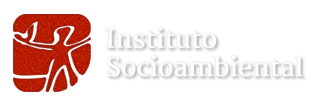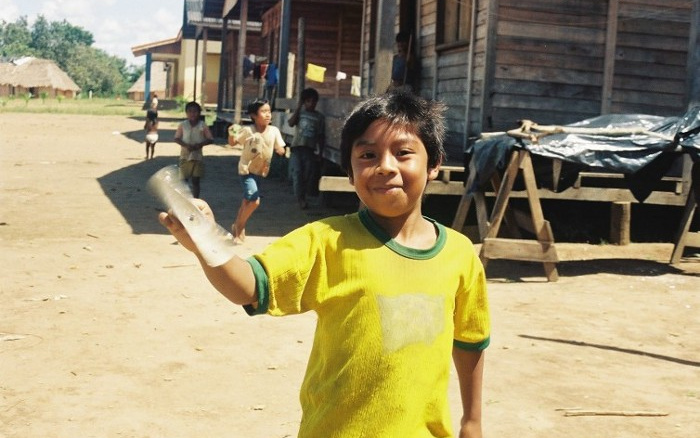Você está na versão anterior do website do ISA
Atenção
Essa é a versão antiga do site do ISA que ficou no ar até março de 2022. As informações institucionais aqui contidas podem estar desatualizadas. Acesse https://www.socioambiental.org para a versão atual.
Indigenous Peoples for children, now on mobile!
Tuesday, 20 de October de 2020 
Did you know:
Esta notícia está associada ao Programa:
Do your children spend hours on their mobile phones? Now, didactic content can aid the virtual teaching experience of children and adolescents during the pandemic
Brazil has over 250 indigenous peoples, totalling more than 900,000 people who speak over 150 different languages, and who make up a cultural diversity unknown to many Brazilians. With this in mind, the Instituto Socioambiental in 2009 created ‘Povos Indígenas do Brasil Mirim’ (Indigenous Peoples of Mirim Brazil, or just Mirim), a platform about native peoples aimed at children and young people. The site has been upgraded to a more updated and responsive version, easily accessible via mobile phone, which is the most used device by young people and students, especially during the pandemic and for virtual classes. As such, the new Mirim can be a teaching and learning tool for teachers and students tackling the difficulties of remote lessons.
The new Mirim website presents an overview of the situation of indigenous people in the country, with examples from different peoples, each with their own story and particularities. The first version of the site was launched 11 years ago and converted into a book in 2016. In 2011, the platform won the Comkids Prix de la Jeunesse Iberoamericano in the ‘Digital and Interactive’ category.
According to Fany Ricardo, anthropologist and founding partner of ISA, “Mirim also delighted children and adults because as well as the accessible language and visual richness, it shows the particularities and diversity of some indigenous peoples, leaving the common place of the ‘generic indian’”. The new version will be launched in Portuguese, Spanish, German and Norwegian.
Silvia Futada, ISA advisor, recalls that the original idea for Mirim came from interacting with children and young people who accessed the Indigenous Peoples in Brazil website and who needed a different type of language. “The creation of the site also gained momentum with the approval of Law 11.654/2008, which included the “Indigenous” subject in the school curriculum”, says Silvia.
“The teaching of indigenous subjects in schools is important because it gives students a wider and more diverse contact with their own history and reality. Just as the formation of Brazil comes from different cultures and realities, one must multiply the narratives dealing with our reality in our school curricula”, says Paula Mendonça, an educator working with the implementation of Law 11.645/2008. “It is still a challenge to bring together the indigenous realities of today and what is learned at school. Reducing this distance is an urgent necessity, a right to learning provided for by law and a practical exercise of respect for difference and diversity”, she adds.
The Indigenous Peoples of Brazil site, the ‘adult’ version of the platform, is the largest encyclopedia of indigenous peoples that exists in Brazil today. There are entries on 210 peoples by specialists who have deep knowledge of the particularities of each people. But how can this complex content be translated for people who have never come across the subject before? How can the indigenous peoples be talked about without falling into generalisations?
In response to this challenge, Mirim answers simple questions: How do the indians live? What games do they play? What was it like before Cabral? How do indigenous children learn? To respond to each of these questions, examples of specific peoples are used, in accessible language. What is teaching like in the Xavante? Who does what among the Araweté? What are the myths of the Ticuna, Tembé, Kanamari and the Enawenê-Nawê?
“Indigenous worlds are based on forms of existence which reject inequality and establish a respectful relationship with the environment. New generations need to learn that building a future different to the world we live in today is possible, which is why it is so important that children learn from the examples of indigenous worlds, which resist, despite all the violence they have suffered for over five centuries”, explains Karenina Andrade, anthropologist and professor of the Federal University of Minas Gerais (UFMG).
Some of the information on Mirim is shown below. You can browse the site here.
Did you know:
Only 25 indigenous languages are spoken by over 5,000 people?
Around 110 indigenous languages are spoken by less than 400 people?
The Akuntsu language is only spoken by the three survivors who form this indigenous group?
The Guató have a population of around 370 people, but there are only three indigenous persons who remember the language!
Studies show that at the beginning of the 16th century there were between 2 and 4 million indians.
ISA
Imagens:



